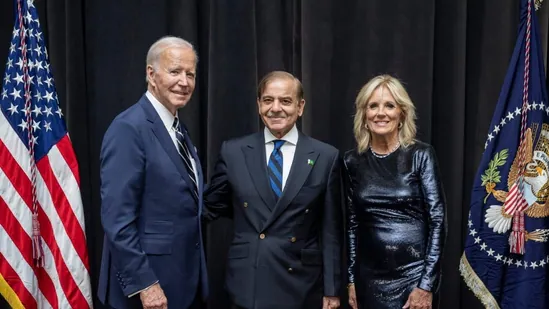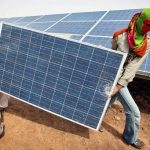Khurram Dastgir, Federal Minister for Power, met with a delegation of the International Development Finance Corporation (DFC) today and the delegation was headed by DFC Chief Climate Officer Jake Levine while Deputy Chief of Staff Policy Naz El-Khatib accompanied him. Renewable Energy Sector. The minister apprised the delegation of the solar projects of the present government. He said that the future policy outlook is based on the plans that all new electricity generation will be based on indigenous resources.
Renewable Energy Sector, The policy aims to reduce the import of fuel and conservation of energy. The delegation appreciated the solar policy and declared it a win-win for climate considerations and soaring energy prices and said that DFC will continue its engagement with Pakistan on renewable energy.
Though Pakistan is still far behind the world in terms of renewable energy production, still the government is trying to release projects to normalize the production of renewable energy. Currently, a 330-megawatt power plant project, Thar Coal Power Plant, is being built under the CPEC block II, in Tharparkar, Sindh and PM claim in their inauguration speech that it can save Pakistan $6 Billion. A week ago, Shebaz Sharif visited the site of the project and explained the importance of linking Thar Coal with the Railway to eliminate all the problems the Railway is currently facing. Referring to the inaugural ceremony, PM Shehbaz said that Thar coal will generate electricity with 10 rupees per unit.
“It is a project, which is being completed with modern technology. These coal power plants would not create pollution. The region has massive 175 billion tonnes of coal deposits, it is a treasure in Thar. Brilliant projects are being installed here for power generation. Women here operating RO plants, people getting jobs,” the PM lauding the effort in Thar said.
Around a third of worldwide energy production capacity is presently derived from low-carbon sources, with renewables accounting for 26% and nuclear power accounting for 10%. The remaining two-thirds are derived from fossil fuels that generate greenhouse gases, such as coal, gas, and oil.
If governments throughout the globe are to reach their net-zero goals, renewable energy sources such as solar, wind, and hydropower must become a substantially larger part of the global energy mix. The United States (US), China, and the European Union (EU) will need to work together to reduce emissions.
Prime Minister Shahbaz Sharif’ just recently announced the approval of a 10,000 megawatts solar energy project which will be aimed at reducing import bills that come from importing costly diesel and furnace oil.
There are a lot of dams being currently built in Pakistan, specifically, Mohmand Dam is an under-construction multi-purpose concrete-faced rock-filled dam located on the Swat River approximately 37 km north of Peshawar and 5 km upstream of Munda Headworks in Mohmand District, Khyber Pakhtunkhwa, Pakistan. When completed, the dam would hold around 1.2 million acre-feet (MAF) of water, assisting in flood mitigation in Peshawar, Charsadda, and Nowshera.
In addition to the 160,000 acres of current land, about 18,237 new lands will be irrigated. Mohmand Dam Power House will create 800 MW of hydel power, supplying 2.86 billion units of low-cost, environmentally beneficial hydel electricity to the national grid each year. The project’s annual benefits are anticipated to reach Rs51.6 billion.
In terms of wind and biofuel production, Pakistan has close to no progress. The wind has great potential in Pakistan in South Punjab and the North Sindh region, where many lands are deserts and solar, and Pakistan can create wind energy in massive amounts. Biofuel, on the other hand, is a bit more complex matter, it requires top-notch experimentation, and its cost is high. But many Pakistani students are contributing to biofuel innovation, and hopefully, we can scale the industry to a level that can contribute to national prosperity.
Renewable energy presently accounts for 26.74% of the total installed generating capacity in the United States. This is up from 19.7% five years ago and 14.76% a decade ago.
President Joe Biden signed the largest US climate package into law this month, as the country rushes to fulfill its 40% carbon reduction target by 2030. The Inflation Reduction Act will spend $369 billion on domestic clean energy development.
An additional $60 billion will be set aside to generate millions of employment in clean manufacturing. Tax credits and rebates are also included in the law to assist cut the cost of purchasing electric vehicles and installing solar panels and heat pumps in houses.
Pakistan needs to learn from its neighbors too, India have been able to create 150GW of electricity from renewable resources last year and China makes around 790GW of electricity from renewable energy resources. Unfortunately, Pakistan just makes only 38700 MW of electricity out of which only around 17641MW is produced by renewable energy resources.
Read More:
- Pakistan Plans to Make Enough Renewable Energy Sources Till the Year 2030
- Solar Power saved Europeans $29 billion this Summer





 Karachi Will Soon Have its First Solar Park
Karachi Will Soon Have its First Solar Park